This herbal tallow balm is wonderful for supporting healthy skin and is easy to make at home with a few simple, skin-nourishing ingredients!
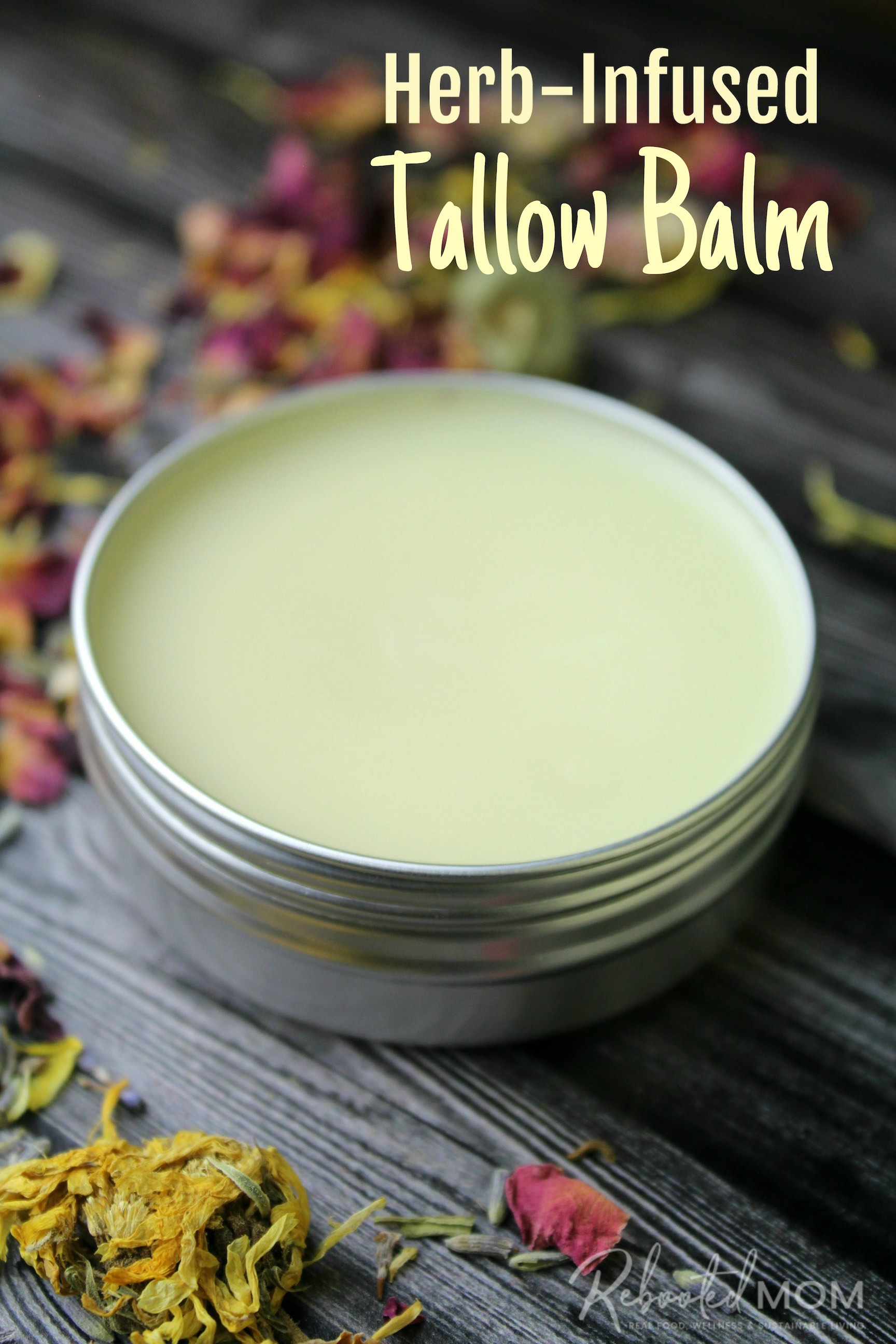
A few years ago after I had our 5th child, I found out that tallow makes an incredible body butter and beauty balm moisturizer. It was purely intentional, too. At the time, I was using a shea body butter on my skin but had started making cold process soaps with tallow.
And as I smeared body butter on my legs, I thought “I wonder if I could substitute tallow instead of shea?” Instead of whipping it (like a nice, lux body butter), I infused herbs and made it into nice herbal tallow balm that I could use on my skin. I was in LOVE.
Now, I use that tallow balm on my legs, under my eyes, on my feet and every time I got a cut or scrape from being careless in the garden outside.
Beef fat for skin? Who knew?
Grass-fed tallow is wonderful for skin. Not only is it great for aging, it’s also rich in antioxidants, and is easily absorbed. It’s rich in vitamin A, D, E and K, and closely resembles the human skin cell structure.
Tallow contains 50-55% saturated fat (just like our cell membranes) and is very similar to our own skin’s sebum.
You can use this tallow balm for everything from dry hands to soothing rough feet. I like to slather it on my feet and throw on some thick socks overnight for an intense treatment. You could even use this as an intense moisturizer for your body or face.
Tallow is a superior skin healer for supporting everything from eczema to dry skin, wrinkles and wounds of many types.
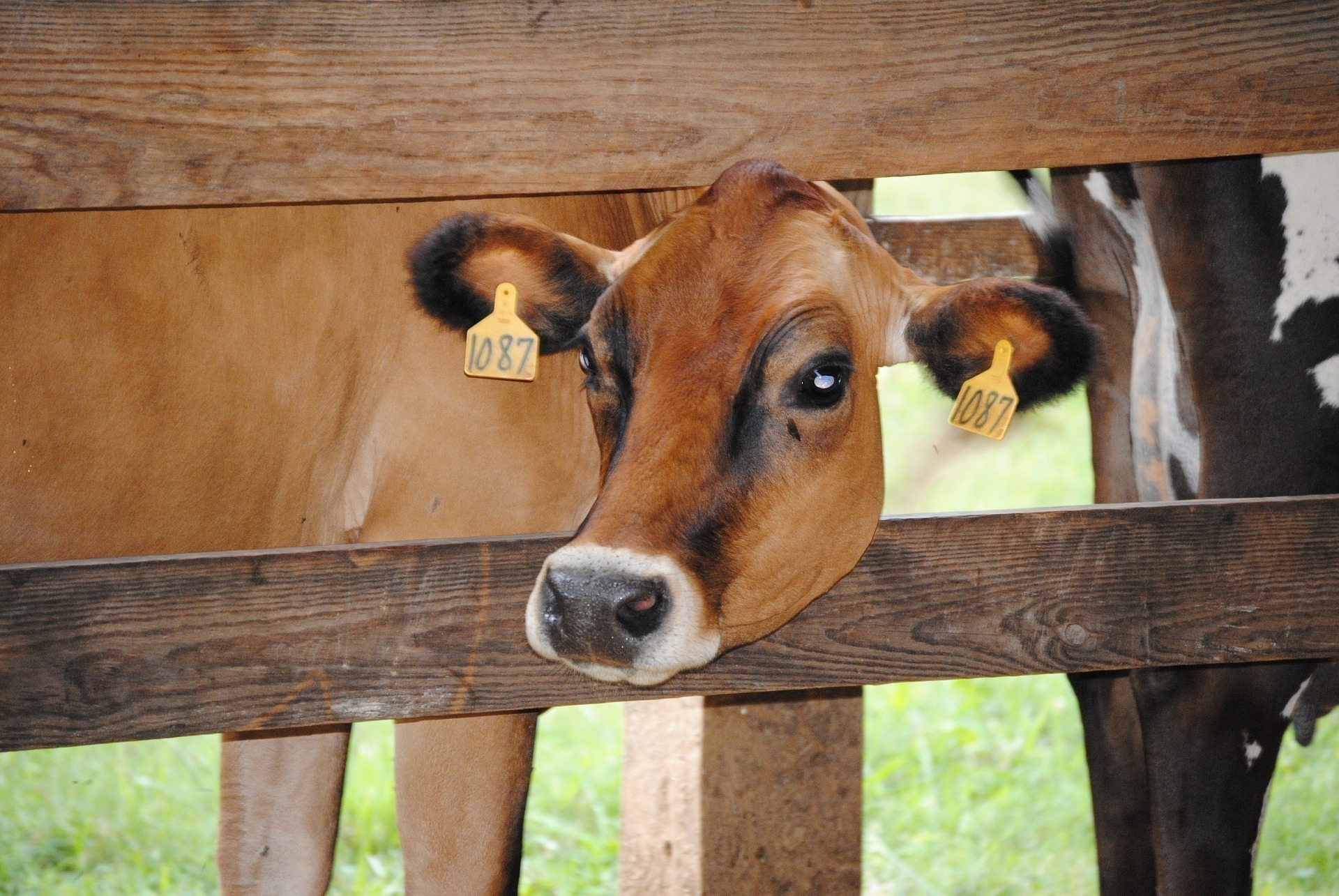
Not only is it light, this herbal tallow balm absorbs quickly into skin!
What Exactly is Tallow?
Tallow is rendered suet. Suet is fat that surrounds the organs/kidneys of deer, cattle, sheep or even goats. Once heated, that suet will liquify – it turns gold in color as it separates from the tissues originally intertwined in the suet (muscles, etc).
The liquified fat is then strained through a fine filter to remove any particles and impurities. It’s then chilled, re-melted, and re-washed before it is stored.
The final color of tallow is light, odorless and pure. And no — using tallow won’t make you smell like beef fat. I promise.
Not All Tallow is the Same!
Though it’s incredibly easy to source, and even more versatile to use, not all tallow should be considered the same. Tallow rendered from 100% grass-fed & finished cattle is a better option for those looking to take advantage of its benefits.
Conventionally-farmed cows are fed an unnatural diet of GMO corn and kept in confined areas with no access to pasture or regular, daily sun. Many toxins are stored in grain-fed animal fat, which, in turn, can end up in your food or skin care products – yuck and gross!
Grass-fed beef is a significantly better option. Cows that graze on pasture reap higher levels of vitamin A, D, E and K because of the sunshine that they are exposed to through the day.
100% grass-fed & finished tallow is rich in:
- vitamins (A, D, E and K)
- conjugated linoleic acid (linked to cancer prevention and improved brain function)
- antioxidants
- anti-microbial palmitoleic acid
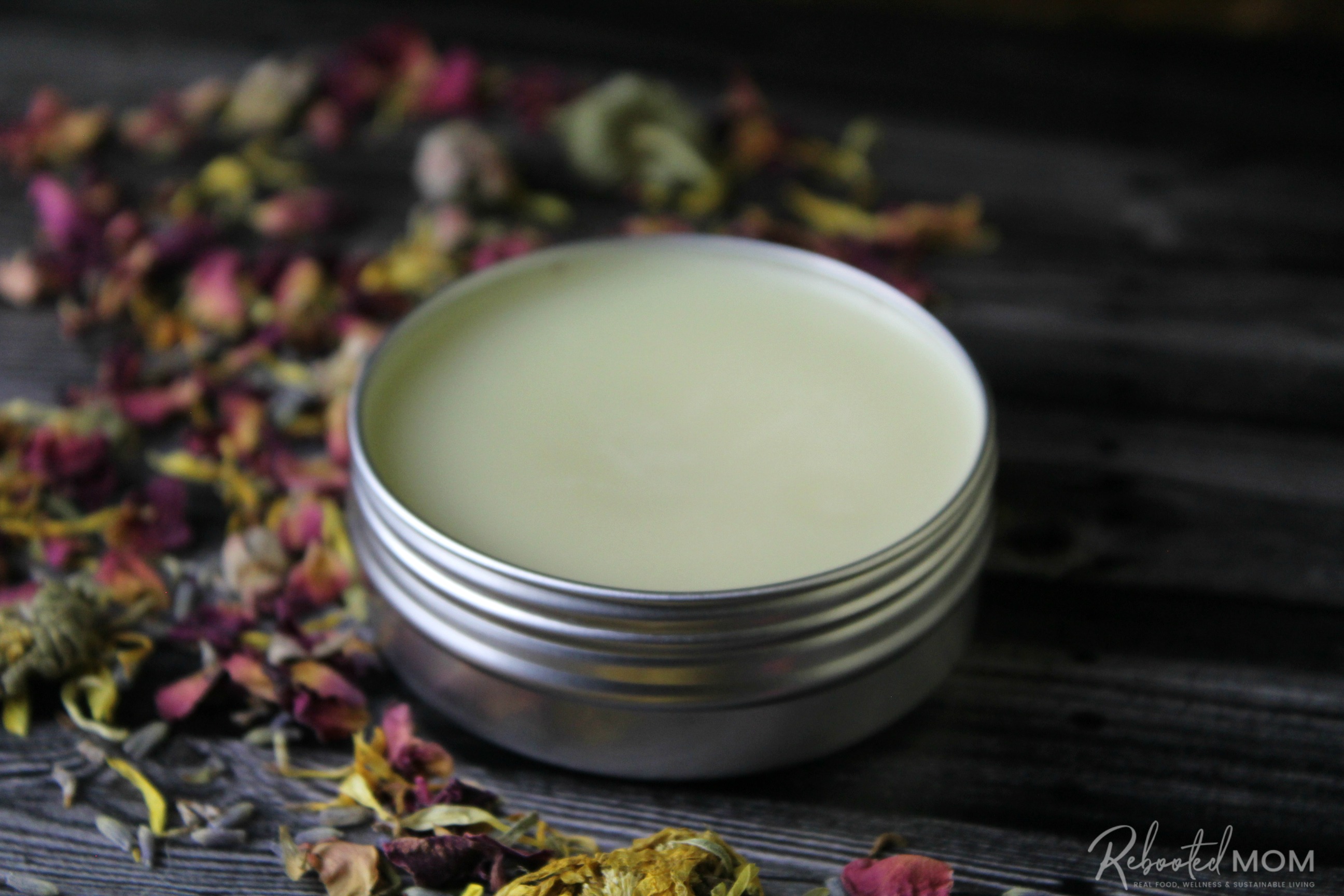
Making this Herbal Tallow Balm is so easy and great for supporting healthy skin! It is my absolute favorite thing to have in the bathroom. Use it on your legs, face, and even lips – talk about “simple beauty”!
Herbal Tallow Balm
Please use 100% grass-fed & finished beef tallow. If you don’t render your own, please locate a farmer close to your own home to purchase high-quality tallow – localharvest.org is a great resource!
Ingredients:
- 12-14 oz tallow (1oo% grass-fed & finished)
- 1 C. dried herbs (calendula, chamomile, rose petals, lavender, comfrey or even creosote)
- 1.7 oz. cold pressed grapeseed oil*
- 1 oz organic beeswax
- essential oils (if desired)
*You can also use rice bran oil, jojoba oil, olive oil or rosehip oil. Stay away from using coconut oil as it is not fast-absorbing and will lead to a salve that isn’t easily absorbed by skin.
Directions:
- Combine the tallow and the herbs in a large, quart-size glass Mason jar. Cover with a lid and canning ring.
- Then, place the jar in a pot on the stove (or in a crock pot) filled with a few inches of water. If you are using a crock pot, place a folded towel in the bottom of the crock before placing the jar within.
- Infuse the oil and herbs for up to 8 hours on the lowest setting (heat). Make sure to add water to the pot/crock as necessary. If you are using the stovetop, infuse for 60-90 minutes, checking frequently to add water to the double broiler. You want to make sure that moisture does not get into the jar.
- After the infusion, strain the oil through a fine mesh strainer or cheesecloth. You can even line a mesh strainer with a double layer of coffee filters for a finer strain. Add the grapeseed oil and essential oils. and stir to combine.
- Pour into 2 oz tins and allow to cool. Label as needed.
Herbal Tallow Balm can keep indefinitely when stored in a cool, dry area away from moisture.
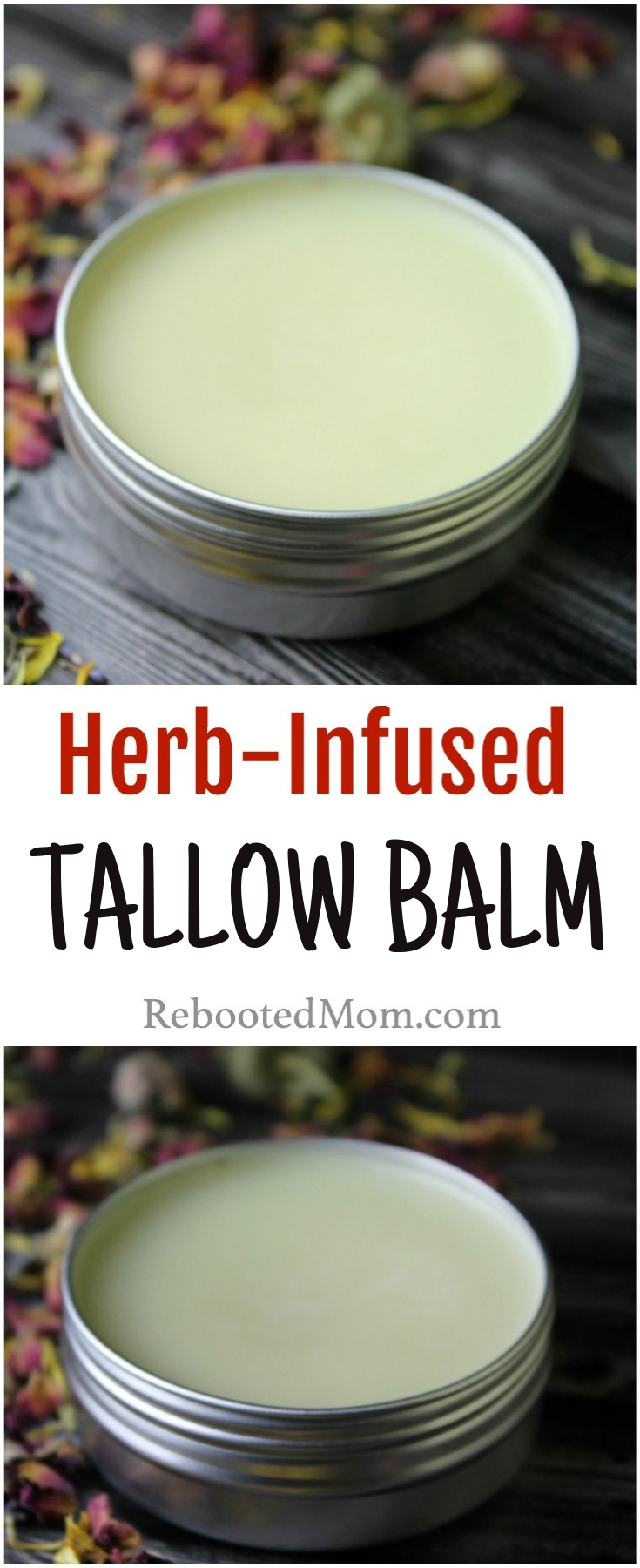
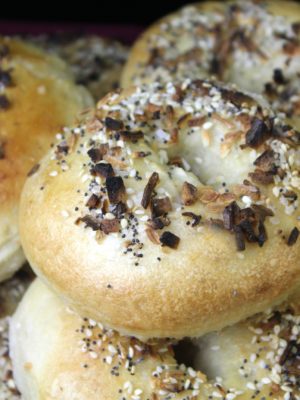
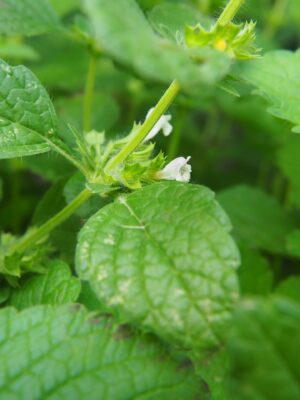
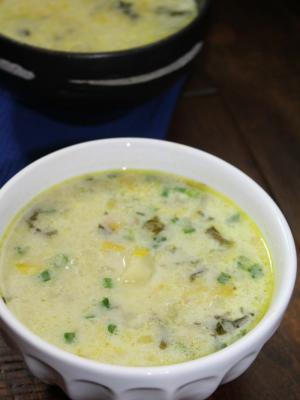
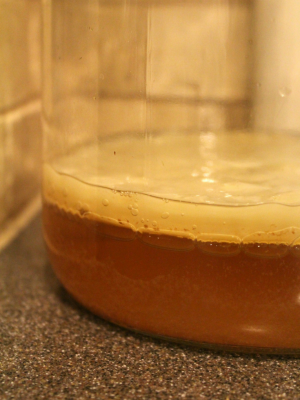
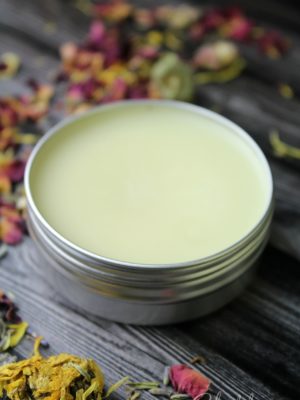
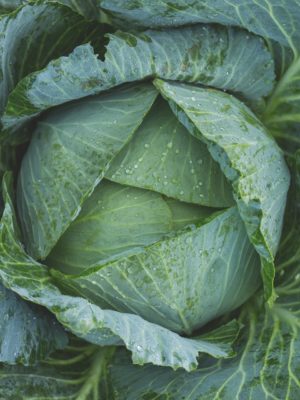

Hi! I’m excited to try this recipe as it is one of the only one I’ve found online that infuses whole herbs in the tallow like I’ve been wanting to do. I just wanted to know at what step do you add the beeswax? I didn’t see it mentioned in the step by step instructions. Thanks for your time!
Hi Haley 🙂
I love infusing herbs in tallow! So when you infuse in tallow, you’ll want to do the infusion “first”; then once you think the herbs have had enough time to infuse, strain them out. Now you’re left with the infused tallow — you’ll then add the beeswax to that.
When you strain, you’ll want to strain quickly because the tallow will harden up. So once the herbs are strained out, you may want to heat the tallow again on a double broiler or in a microwave safe measuring cup when you add the beeswax. Hope that helps 🙂
Hello! Do I NEED beeswax?! I don’t want to purchase a large bag if I only need one ounce! Thanks!
Yes you will – the beeswax will give it the right texture to make it a balm. You can go without it, but it won’t be quite as firm.
Love your blog and this particular recipe. I’m curious where you mention above adding, “even creosote.”
Do you mean creosote that would from in the chimney?? Would you please explain this?
Thank you!
I am sorry I did not clarify. Creosote for many is from the chimney – but for me here in Arizona, creosote is a plant! I use the creosote (leaves, dry) and infuse that in oil for weeks. Then I strain out the creosote leaves and have infused oil. I then add that to my tallow to create a scented balm or body butter. For us here in the Southwest, Creosote is such a treasure, it’s a plant that has a unique scent to it when it rains, and to capture that scent, the plant itself is infused in oil for weeks and then strained. It’s a beautiful smell. I hope that helps!